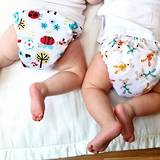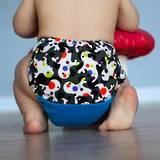Home > Hot Topics > Babies & Kids Gear > Nappies & Toilet Training > Why do babies & toddlers need swimming nappies
Shop
01927
https://www.under5s.co.nz/shop/Hot+Topics+Articles/Babies+%26+Kids+Gear/Nappies+%26+Toilet+Training/Why+do+babies+%26+toddlers+need+swimming+nappies.html
Why do babies & toddlers need swimming nappies
|
So what’s all the fuss about swimming nappies? Are they really necessary? We take a look at why specially designed swimming nappies are needed, what features to look for and other options.
|
You might also be interested in ...
9 Reasons to use reusable nappies
Reusable nappies have come a long way since the days of pieces of cloth and safety pins! There are now plenty of reusable or cloth nappies to choose from and they are easier to use than you may think. Reusable nappies may not be everyone’s first choice, but here are some reasons why reusable nappies may be suitable for you and your baby or toddler.
Washing & caring for modern cloth nappies
Modern cloth nappies are widely available these days, but it’s still important to take good care of them. Check out these useful tips on washing and drying modern cloth nappies and how to keep them in tip top condition.
join usJoin us on social media for all our latest news. |
sign upSign up and receive our latest newsletters. |
|







We take a look at why specially designed swimming nappies are needed, what features to look for and other options for you to try.
Before swimming nappies were invented babies and toddlers weren’t allowed into public pools until they were fully toilet trained.
Now they can go at a much younger age and learn to feel confident in the water, have fun and enjoy swimming lessons from early on.
Why do babies & toddlers need swimming nappies?
Swimming nappies are essentially a waterproof version of disposable and re-usable nappies, but with a few important differences.
Unlike other types of nappies, swimming nappies are designed so that they don’t absorb any water. Even disposable swim nappies, which do contain a small amount of padding, are not really designed to absorb liquid.
The main reason for this is that they would also soak up the water in the pool or sea while your baby or toddler is swimming. The nappies would then become heavy and possibly even start to weigh your little one down under the water.
Unless there is a perfect waterproof seal around the legs and waist of the nappies, it would also be impossible to separate out any urine from the water that your baby or toddler was swimming in.
The purpose of swim nappies is in fact to stop any solid accidents from escaping into the water.
Although many parents take their baby or toddler swimming regularly without having to deal with a ‘poo in the pool’ situation, being prepared just in case it should happen is a good idea.
What to look for in swimming nappies
As the idea of swimming nappies is to contain solid waste, rather than liquids, then the main thing that you want is a nice secure, elasticated or drawstring area on the waist and an elasticated area around the thighs. This will help to keep in any little accidents.
Swim nappies do not need to be waterproof, for obvious reasons, and can be made out of similar fabric to swimming togs.
In fact many swimming nappies are the only items of clothing that your baby or toddler will need in the water, although you may want them to wear more to avoid getting too cold or burnt by the sun.
Swimming nappies can also be worn underneath togs, rash suits or wet suits if you prefer.
Other swimming nappy options
Some people use cheap pocket nappies with no padding as swimming nappies. Although these will probably contain everything fairly well, you may find that they fill up with liquid while your baby or toddler is in the water, which isn’t ideal.
If you want to take them swimming and haven’t purchased a swimming nappy as yet, then disposable swimming nappies are good, cheap option.
Many people don’t realise that you can actually reuse these a number of times by washing them with your togs and towels after use.
If the nappy is unsoiled, then wash and reuse, but make sure that you check that the elastic around the waist and legs is still strong enough to hold anything in. The nappies will start to lose their stretch over a number of uses.
Reusable swimming nappies are a great idea for your baby and toddler too, either at the pool, beach or for water play in the garden.
They tend to be made from light weight fabric, come in cuter designs and are often more reliable than the disposable swimming nappies.
More kids nappy articles:
Source: This article was written by Nappyneedz for all your cloth nappy needs!
Image source zoxoro